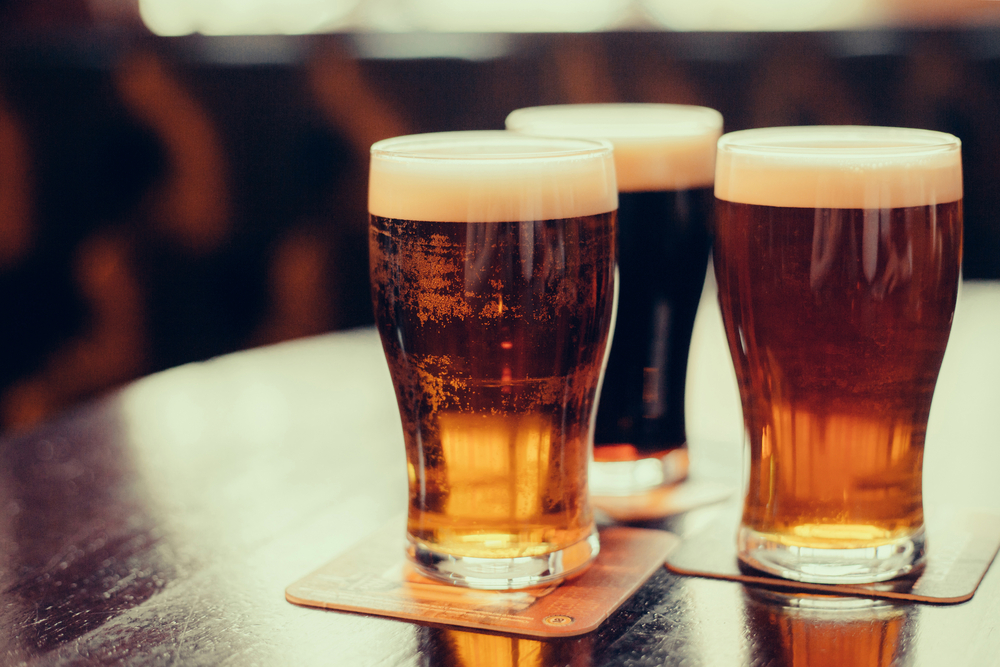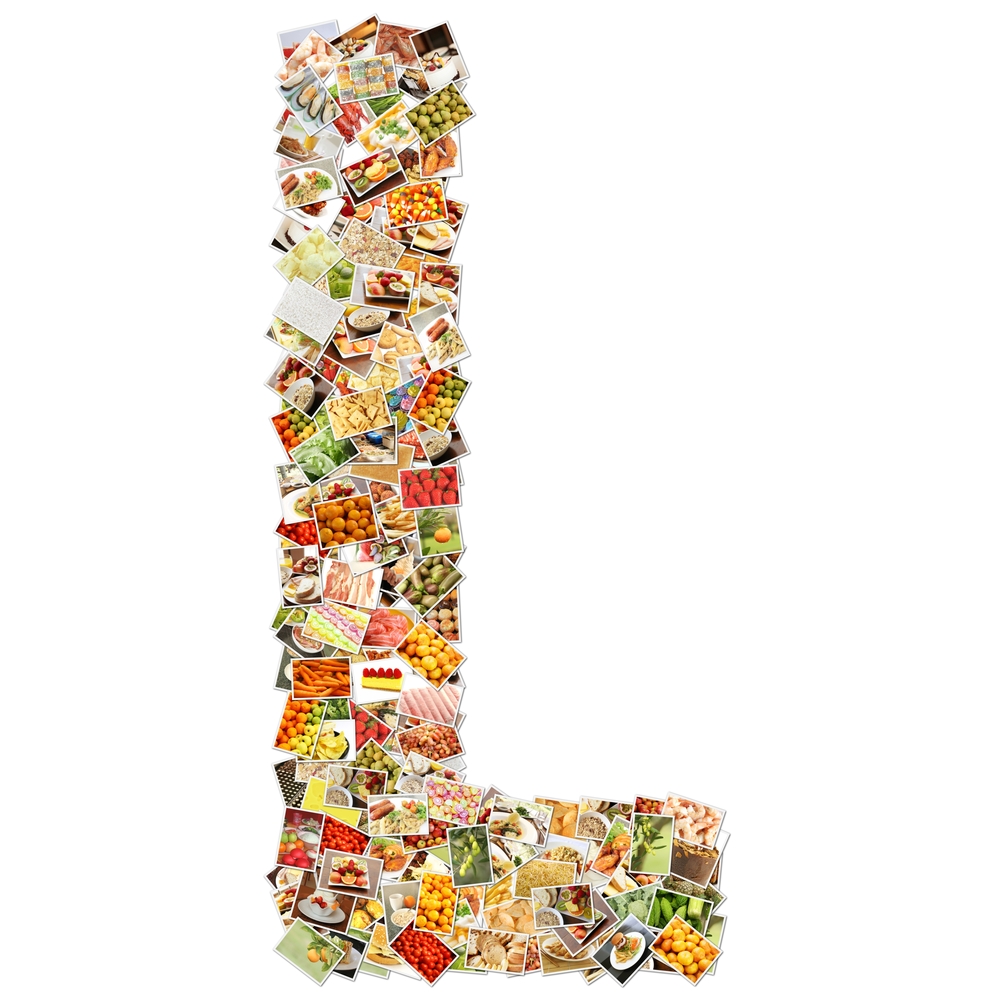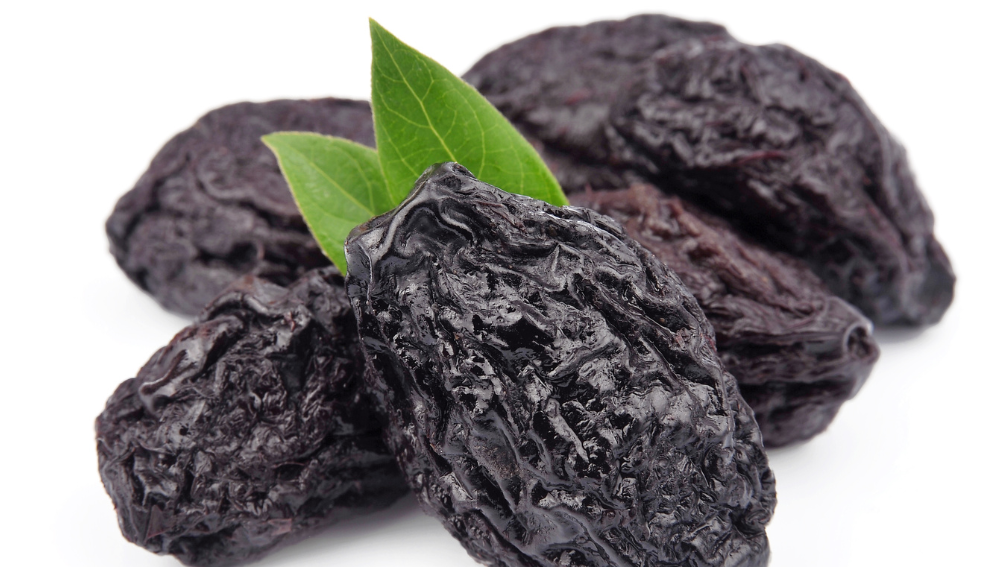I love rhubarb, but I know that not everyone is familiar with its taste. Rhubarb is a unique vegetable that is often used in desserts and jams.
Its tart and tangy flavor can be quite surprising to those who have never tried it before. So, what does rhubarb taste like?
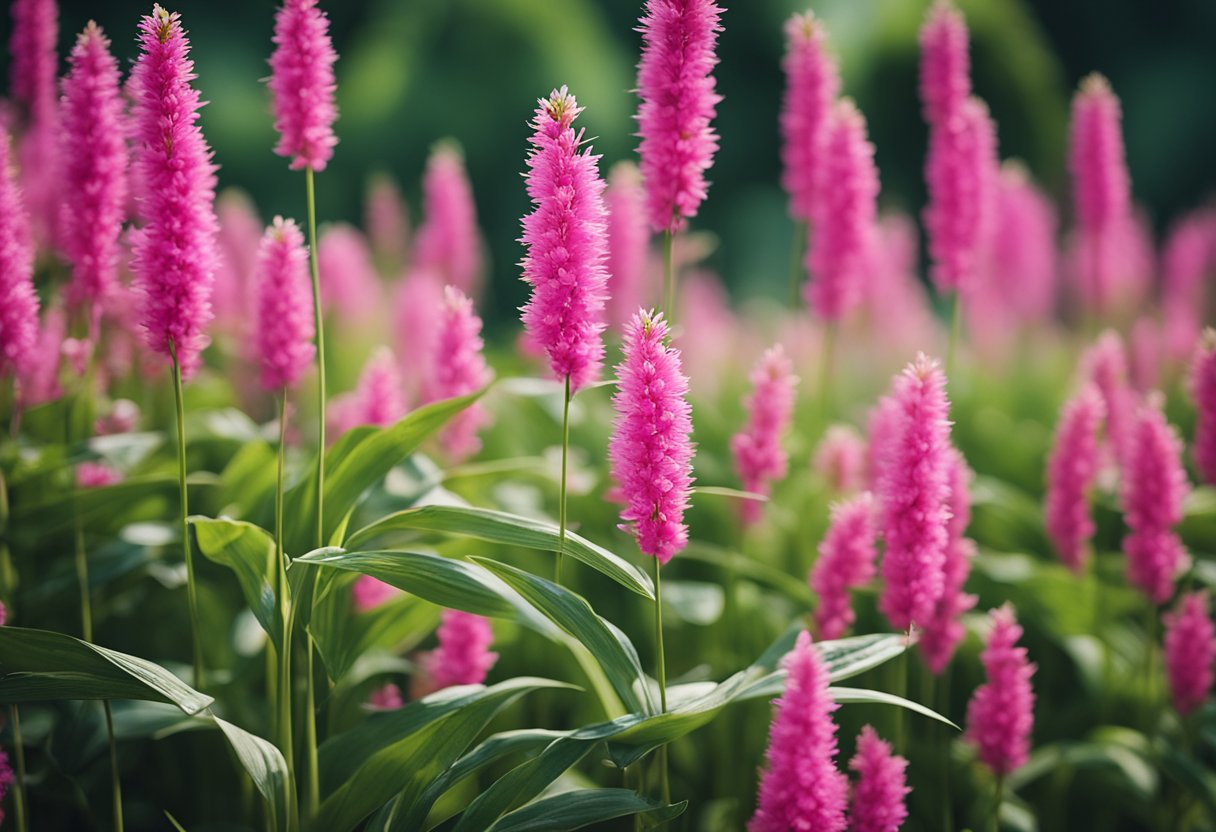
Rhubarb has a sour taste that is similar to citrus fruits like lemons and limes. It also has a slight bitterness that can be compared to unripe apples.
However, rhubarb is not just sour and bitter. It also has a fruity sweetness that can be quite pleasant. The taste of rhubarb can vary depending on the plant and how it is prepared.
Key Takeaways
- Rhubarb has a sour taste similar to citrus fruits and a slight bitterness like unripe apples.
- The taste of rhubarb can also be sweet and fruity depending on the plant and preparation.
- Rhubarb is a unique vegetable often used in desserts and jams.
Understanding Rhubarb
Rhubarb is a perennial vegetable that is known for its green and red stalks. It belongs to the buckwheat family and is often used in desserts such as pies and crumbles. However, rhubarb can also be used in savory dishes like sauces and soups.
There are two main types of rhubarb: forced rhubarb and maincrop rhubarb. Forced rhubarb is grown in the dark and has a more delicate flavor and texture. Maincrop rhubarb is grown in the open air and has a stronger, more tart flavor.
Rhubarb is often described as having a tart, tangy flavor with a hint of sweetness. Its taste is similar to that of unripe apples, grapes, and citrus fruits. The stalks can also have a slightly bitter taste, depending on the plant.
When preparing rhubarb, it is important to remove the leaves as they are toxic. The stalks can be chopped and cooked, or eaten raw.
Rhubarb can be boiled, stewed, baked, or roasted, and is often paired with sugar or other sweeteners to balance out its tartness.
In terms of growth, rhubarb is a hardy plant that can thrive in a range of climates. It grows best in cool, moist soil and requires plenty of sunlight. Rhubarb stalks can be harvested in the spring and early summer.
Overall, rhubarb is a versatile vegetable with a unique flavor profile. Its celery-like stalks and tangy taste make it a popular ingredient in both sweet and savory dishes.
The Taste of Rhubarb
Rhubarb is a unique vegetable with a distinct taste that can be difficult to describe. As someone who has tasted rhubarb, I can confidently say that it has a tart and sour taste.
The taste of rhubarb can be overwhelming for some people, but it can also be quite enjoyable when prepared properly.
When raw, rhubarb is quite bitter and sour. However, when cooked, it becomes less tart and more palatable. The sourness of rhubarb is often balanced with the addition of sugar or sweet fruits like strawberries.
Rhubarb is often used in pies, jams, and other desserts because of its tartness and ability to pair well with sweet ingredients.
The taste of rhubarb can also vary depending on its ripeness. Ripe rhubarb is less sour and more sweet, while unripe rhubarb is more sour and tart.
When selecting rhubarb at the grocery store or farmers market, it’s important to look for stalks that are firm and brightly colored. Dull or limp stalks may be an indication that the rhubarb is past its prime and will have a less desirable taste.
In summary, the taste of rhubarb is tart and sour, but can be balanced with the addition of sugar or sweet ingredients. It can also vary depending on the ripeness of the vegetable.
When selecting rhubarb, it’s important to choose firm and brightly colored stalks for the best taste.
Nutritional Value of Rhubarb
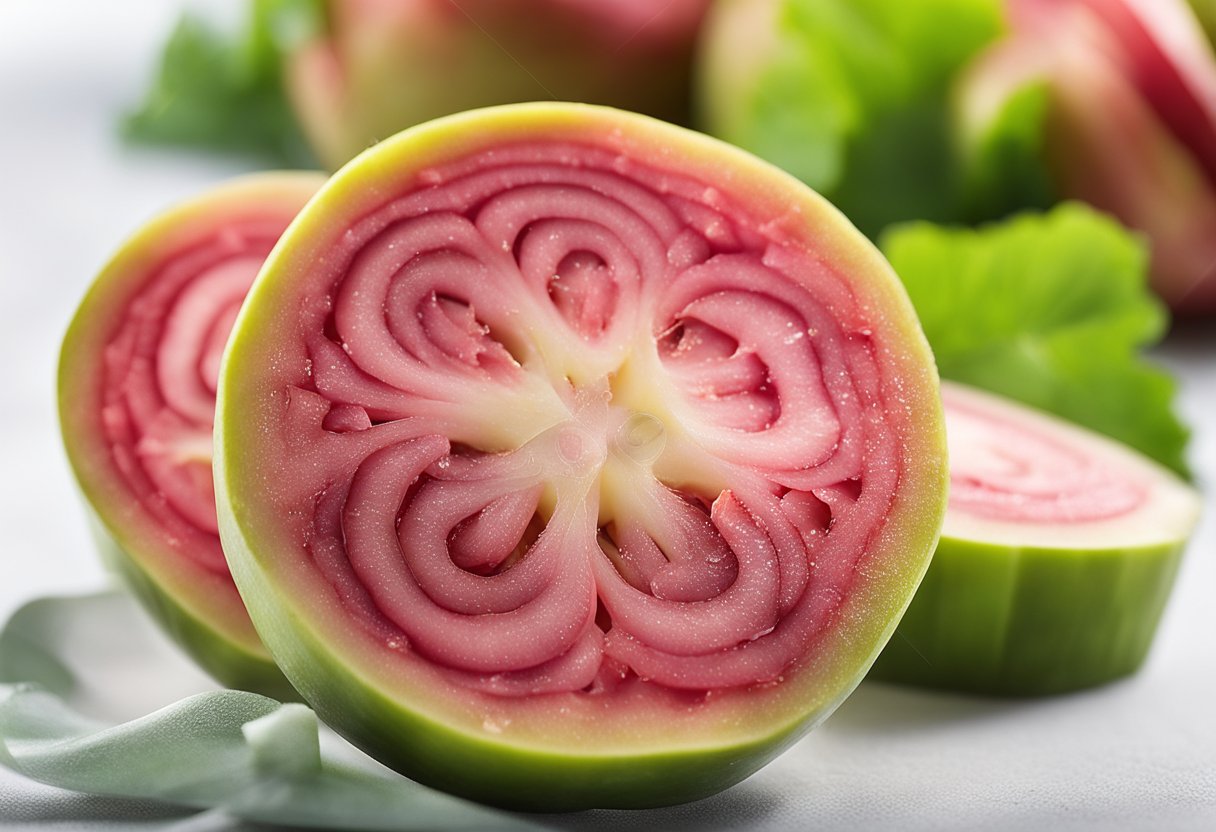
As a nutritionist, I always recommend including a variety of fruits and vegetables in your diet to ensure you are getting a range of nutrients.
Rhubarb, although technically a vegetable, is often used in sweet dishes and desserts due to its tangy flavor. But what is the nutritional value of rhubarb?
Firstly, rhubarb is low in calories and fat, making it a great addition to any weight loss diet. One cup of diced, raw rhubarb contains only 26 calories and 0.2 grams of fat.
Rhubarb is also a good source of fiber, with one cup containing 2.2 grams of fiber. Fiber is essential for maintaining healthy digestion and can also help with weight loss by keeping you feeling full for longer.
In terms of vitamins and minerals, rhubarb is particularly high in vitamin K, which is important for bone health and blood clotting.
One cup of rhubarb contains 35% of the recommended daily intake of vitamin K. Rhubarb also contains calcium and iron, which are both important for maintaining healthy bones and preventing anemia.
While rhubarb is not necessarily a “superfood,” it does contain antioxidants which can help to fight off free radicals and reduce inflammation in the body.
It’s important to note that rhubarb leaves are toxic and should not be consumed. Only the stalks should be used in cooking and baking. Overall, rhubarb is a nutritious and delicious addition to any diet.
The Toxicity of Rhubarb
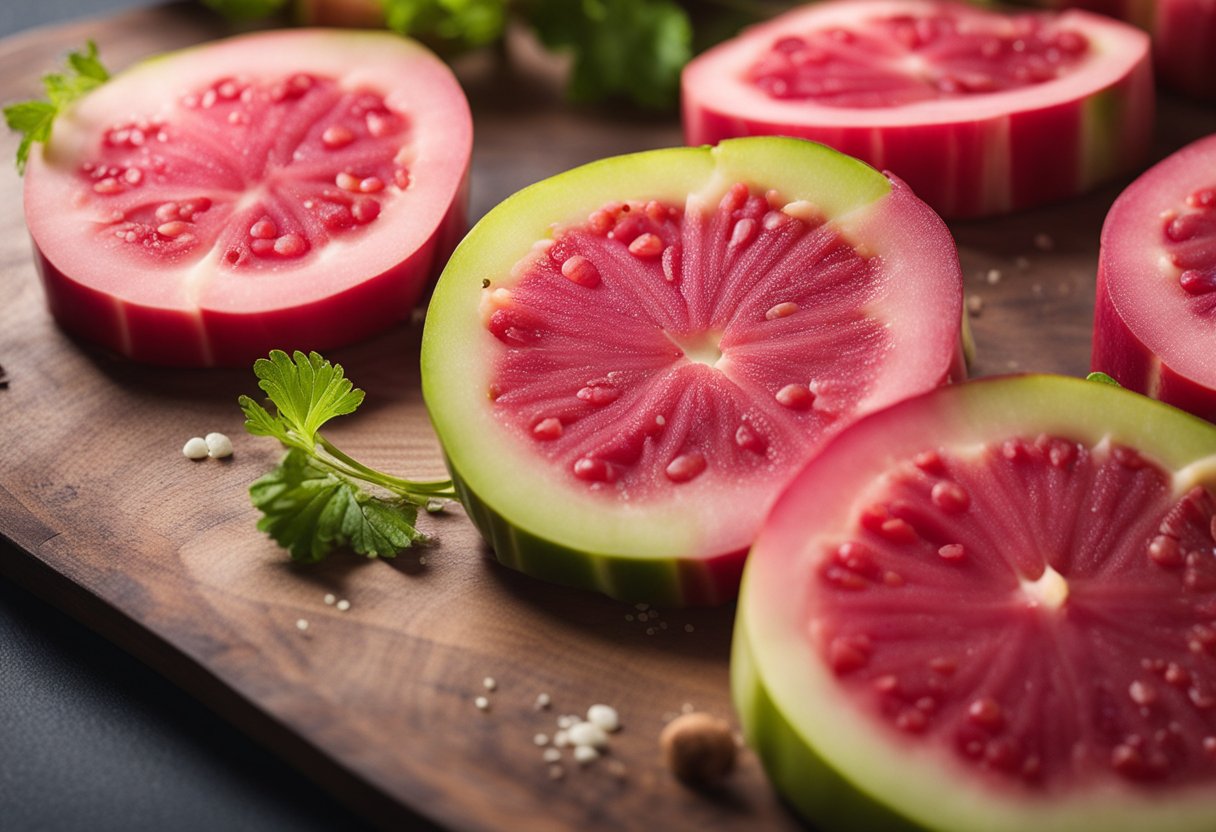
As I researched the taste of rhubarb, I came across information about its toxicity. Rhubarb leaves contain a high concentration of oxalic acid, which can be toxic if ingested. This is the plant’s primary method of defense against herbivores.
It is important to note that while rhubarb stalks are edible and safe to consume, the leaves should never be eaten. The oxalic acid in the leaves can cause difficulty breathing, nausea, and even kidney stones.
In severe cases, it can be fatal to animals, so it is important to keep pets and livestock away from the leaves.
Humans would have to eat a lot of leaves to experience severe symptoms, but it’s best to avoid them altogether. If you have rhubarb plants in your garden, make sure to dispose of the leaves properly.
It’s safe to put them in your home compost, but do not use the compost on edible plants.
In summary, while rhubarb is a delicious and versatile ingredient, it’s important to be aware of the potential toxicity of its leaves. Always discard the leaves and only consume the stalks.
Culinary Uses of Rhubarb
Rhubarb is a versatile ingredient that can be used in a variety of culinary applications. Its tart flavor and firm texture make it a popular choice for sweet and savory dishes alike. Here are some of the most common ways to use rhubarb in your cooking:
Pies and Desserts
Rhubarb pie is perhaps the most popular way to use this versatile ingredient. The tartness of the rhubarb is balanced by the sweetness of sugar and often paired with strawberries or other fruits. Rhubarb can also be used in crisps, crumbles, and tarts.
Jams and Compotes
Rhubarb’s tart flavor makes it an ideal ingredient for jams and compotes. When cooked down with sugar, rhubarb becomes soft and spreadable, making it perfect for spreading on toast or using as a topping for ice cream or yogurt.
Sauces and Relishes
Rhubarb can be used to make a variety of sauces and relishes. It pairs well with savory ingredients like pork and vegetables, as well as sweet ingredients like maple syrup and cranberries. Rhubarb sauce can be used as a dip for roasted snacks or as a topping for grilled meats.
Salads and Salsas
Rhubarb can add a complex flavor to salads and salsas. Chopped rhubarb can be added to green salads for a tart crunch, or mixed with other fruits and vegetables to make a flavorful salsa.
Purees and Juices
Rhubarb can be pureed and used as a base for custards, dips, and ice cream. It can also be juiced and used as a base for cocktails and other beverages.
When using rhubarb in your cooking, it’s important to balance its tartness with sweetness. Adding sugar or other sweeteners can help to mellow out the flavor and make it more palatable.
Rhubarb is in season from late spring to early summer, so be sure to harvest and store it properly to enjoy it year-round.
Rhubarb in Different Regions
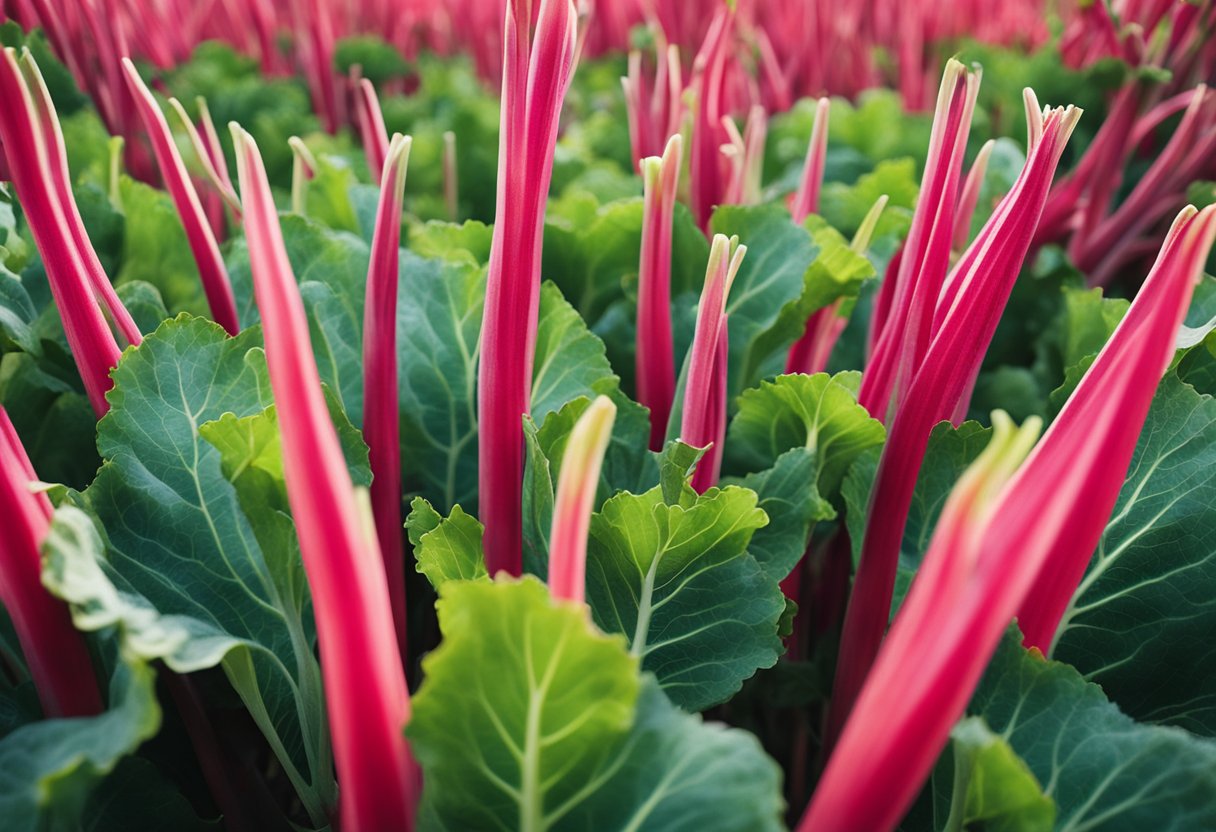
Rhubarb is a vegetable that is widely grown and consumed in different regions of the world. The taste of rhubarb can vary depending on where it is grown and how it is prepared. In this section, I will discuss the taste of rhubarb in different regions.
United States
In the United States, rhubarb is commonly grown in the northern states, such as Minnesota and Wisconsin. The taste of rhubarb in the US is generally described as tart and sour, with a hint of sweetness.
Rhubarb is often used in pies, jams, and other desserts in the US.
Europe
In Europe, rhubarb is a popular vegetable that is used in a variety of dishes. The taste of rhubarb in Europe is similar to that in the US, with a tart and sour flavor. However, in some parts of Europe, such as France and Italy, rhubarb is also used in savory dishes.
China
In China, rhubarb is used for medicinal purposes rather than culinary ones. The taste of rhubarb in China is described as bitter and astringent. Chinese rhubarb is often used in traditional Chinese medicine to treat digestive problems.
Age
The taste of rhubarb can also vary depending on the age of the plant. Young rhubarb is generally sweeter and less tart than older rhubarb. Older rhubarb can be quite sour and may require more sugar when used in cooking.
In conclusion, the taste of rhubarb can vary depending on where it is grown and how it is prepared. Rhubarb is a versatile vegetable that can be used in a variety of dishes, from sweet desserts to savory dishes.
Frequently Asked Questions
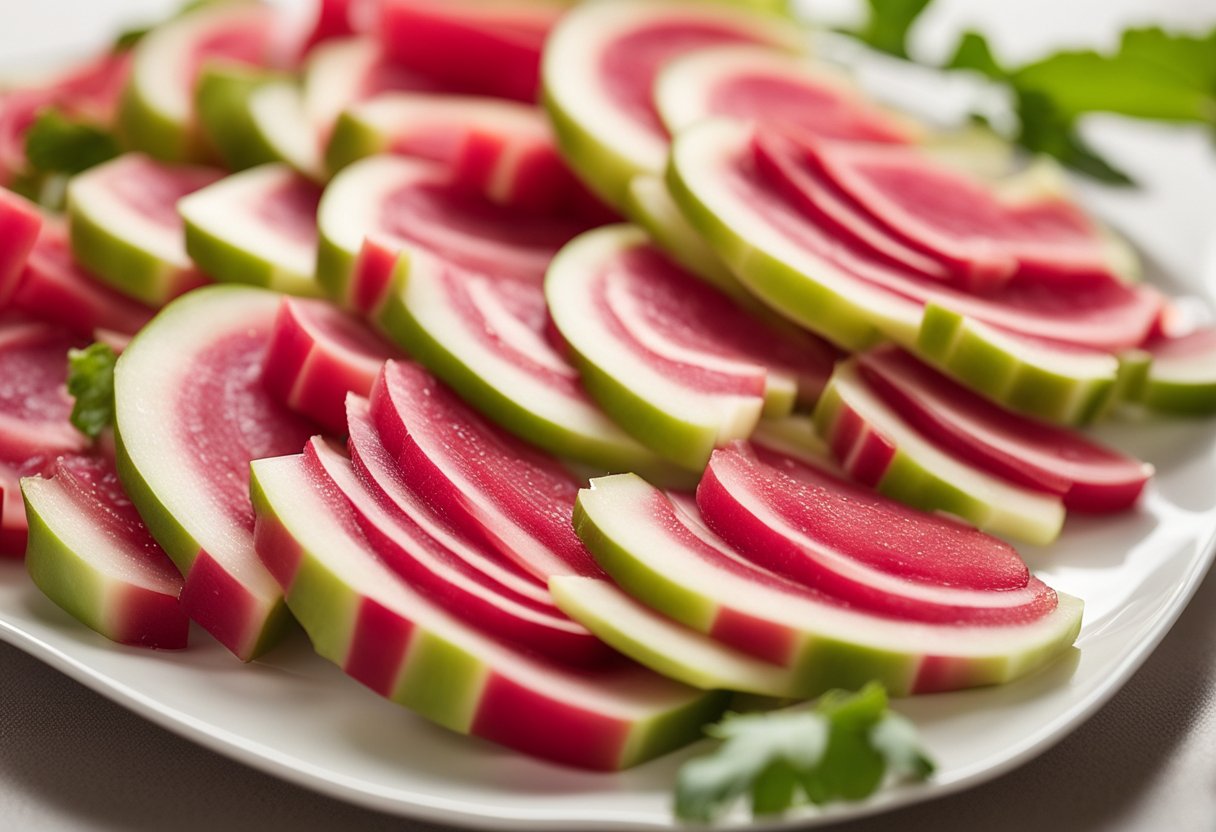
What are some popular recipes that use rhubarb?
Rhubarb is a versatile ingredient and can be used in a variety of recipes. Some popular recipes that use rhubarb include pies, crisps, jams, and sauces. Rhubarb can also be used in savory dishes such as chutneys and marinades.
How do you cook rhubarb on the stove?
To cook rhubarb on the stove, first, wash and chop the rhubarb stalks into small pieces. Then, add the chopped rhubarb, sugar, and a small amount of water to a saucepan.
Cook the mixture over medium heat until the rhubarb is tender and the mixture has thickened.
What are the health benefits of eating rhubarb?
Rhubarb is a good source of fiber, vitamin K, and calcium. It also contains antioxidants and has been shown to have anti-inflammatory properties. However, it is important to note that rhubarb leaves are toxic and should not be consumed.
What flavors pair well with rhubarb?
Rhubarb has a tart flavor that pairs well with sweet ingredients such as sugar, strawberries, and other fruits. It also pairs well with warm spices such as ginger and cinnamon.
Is rhubarb poisonous and how should it be handled?
While rhubarb stalks are safe to eat, the leaves contain high levels of oxalic acid and are toxic. It is important to always discard the leaves and only consume the stalks.
When handling rhubarb, it is also important to wash it thoroughly and remove any tough fibers.
Is rhubarb a fruit and where does it grow?
Although rhubarb is often used in sweet dishes, it is actually a vegetable. Rhubarb grows best in cool climates and is often harvested in the spring and early summer. It is commonly grown in the United States, Canada, and Europe.





